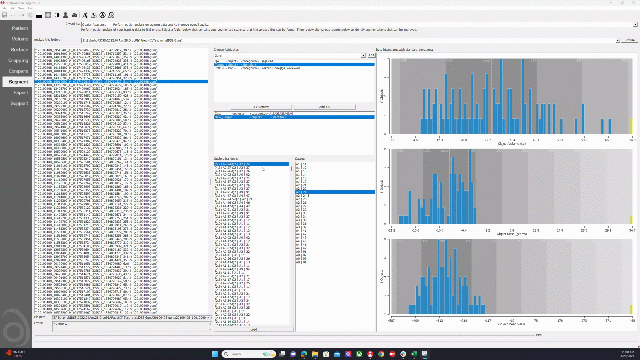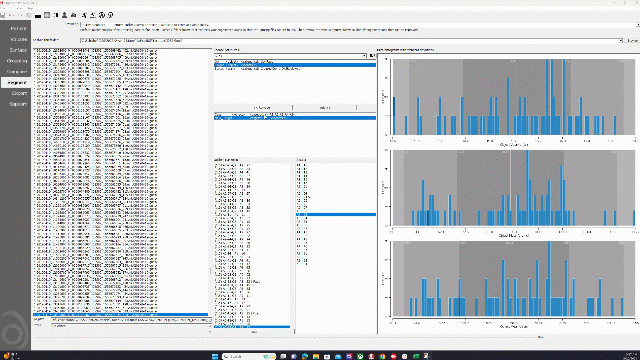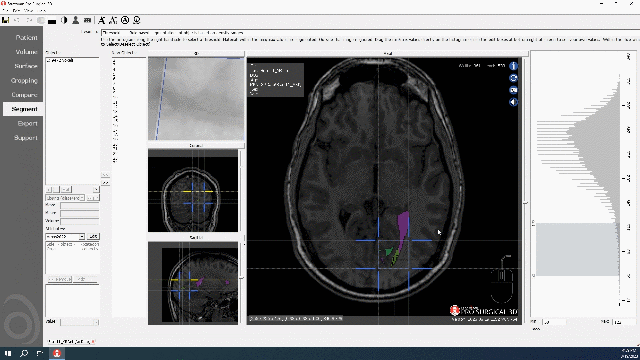When positive detection and false alarm rates determine the success of your algorithm, precision in the segmentations of your training data is paramount. Enter Segmentation for Pro-Surgical 3D, a groundbreaking software tool designed to revolutionize the segmentation process in 3D imaging for any application. With its advanced functionalities and user-friendly interface, Segmentation for Pro-Surgical 3D empowers professionals from medical, security, and data industries alike to achieve unparalleled accuracy in segmenting complex structures, laying the foundation for informed decision-making and successful project outcomes.
Importance of QA in Segmentation Data: Driving Algorithmic Excellence
Segmentation accuracy is not merely a matter of convenience; it is a critical factor that directly influences the efficacy of a model's ability to sort through data and detect desired objects, specimens, or anomalies. Quality Assurance (QA) processes play a pivotal role in ensuring the integrity of segmented data, as even minor discrepancies can have significant ramifications on model training and algorithm performance. By meticulously validating segmentation data, developers can mitigate errors and anomalies, thereby enhancing the reliability and precision of imaging detection algorithms. A proper QA process will save time, money, and headaches as issues in the data are caught long before they create issues in model performance. This not only streamlines the development process and shortens the time from inception through certification to deployment, but also helps reduce investigation and re-testing times that serve as massive drains on resources and schedules.

Utilizing Histograms for Enhanced Visual Verification and Performance Metrics
A key feature of Segmentation for Pro-Surgical 3D lies in its utilization of histograms for both visual verification and performance metrics. Histograms provide a comprehensive overview of pixel intensity distributions within segmented images, offering valuable insights into segmentation accuracy and data integrity. By leveraging histograms, users can visually inspect segmentation results, identify potential inconsistencies, and make informed adjustments to optimize accuracy. Furthermore, the tool generates performance metrics based on histogram analyses, enabling users to quantitatively evaluate segmentation quality and refine algorithms for superior performance. All of these features are built directly into the user interfaces of the Segmentation for Pro Surgical 3D toolset, allowing users to leverage them almost immediately.

Harnessing the Thresholding Tool: Validating Accuracy and Detecting Artifacts
In addition to histograms, Segmentation for Pro-Surgical 3D incorporates a powerful Thresholding Tool, which serves as a cornerstone for validation and artifact detection. This tool enables users to set precise thresholds, effectively delineating desired anatomical structures from background noise or artifacts. Through meticulous thresholding validation, users can ensure the fidelity of segmented data, thereby enhancing the reliability and accuracy of surgical imaging algorithms.

Versatility in Segmentation Efforts: From New Projects to Rapid Evaluation
One of the hallmark features of Segmentation for Pro-Surgical 3D is its versatility, catering to both new segmentation endeavors and rapid evaluation of existing datasets. Whether initiating a brand-new segmentation project or assessing pre-segmented data, users can leverage the tool's intuitive interface and comprehensive functionalities to streamline the process and achieve optimal results efficiently. This adaptability ensures your team can meet the evolving demands of any projects in imaging with ease and precision. Additionally, this tool was built from the ground up with the intention of supporting new and existing data sets. Why not improve upon data already collected? This allows collected data to be leveraged without the costs, manpower, scheduling, and other resources that it takes to plan and collect more data for segmentation. This also means that future trainings can continue to build more extensive libraries of data to further improve detection while driving false alarm rates even lower.
Empowering Precision for Enhanced Algorithm Performance Outcomes
Artificial Intelligence and Machine learning continue to redefine the ever-evolving landscape of medical care, threat detection, imagery analysis, and object detection. In all of these industries, precision remains paramount. Segmentation for Pro-Surgical 3D stands ready to empower development team members with advanced tools and functionalities to enhance segmentation accuracy and drive algorithmic excellence. By prioritizing quality assurance, leveraging histograms, and harnessing the power of the thresholding tool, this software suite not only simplifies the segmentation process but also elevates the quality of data used by imaging algorithms. Ultimately, Segmentation for Pro-Surgical 3D will save teams time and money by streamlining one of the most intensive processes in the entire development chain. Reduce the amount of effort spent on segmenting data for your projects by using a tool solely created for this purpose, and use that time to improve other difficult aspects of algorithm development and curation.